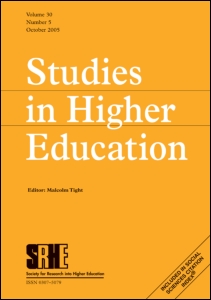#8 ‘Digital Agility and Disabled Learners’ by Seale, Draffan and Wald
Over the course of April I have been highlighting influential disability, technology and education research published by Routledge. All the papers cited are available for free this month to all.

My last post outlining a selection of papers on disability and the internet was focussed on research that has taken place prior to the advent of Web 2.0. If you’ve been following my blog – you’ll also know that the vast majority of papers listed have sprung from the pages of Disability and Society. Today’s offering is strikingly different. Digital Agility and Digital Decision-Making is a paper based on landmark research undertaken by the team behind the LexDis project: Mike Wald, EADraffan and JaneSeale. LexDis been concerned with the use of technology amongst disabled learners in higher education. The strength of LexDis is that it demonstrates the capabilities of disabled students, their strategies and tactics for technology use with regard to the media they actually use – with participants actively engaging in the development of the research.
Digital Agility and Digital Decision-Making recognises and theorises disabled users’ agency, how disabled students’ ”break and enter” otherwise closed systems, the cost/benefit analyses they conduct when applying assistive technologies and so on. In this way disabled students’ ‘digital agility’ is recognised (arguably, for the first time) and presented in a lucid and viable framework. This does not mean that barriers to accessibility can be left unresolved, or that digital skills should not be taught – but the authors identify the value of an empowerment model of development that recognises disabled people as collaborators and agents, rather than passive recipients of digital services. As such this paper is highly recommended for anyone interested in HCI, user experience, accessibility, e-learning or assistive technology.
If you are accessing this page outside of Routledge’s free for all – be sure to check the documents stemming from the Lexdis Project itself. These are freely available day in, day out. The reports, methodology documents and other papers published from the research all reward attention.
Finally, another essential aspect of JISC funded and JISC TechDis work springing from Southampton’s accessibility Gurus is the Web2Access website. A task-based resource which allows educators (and anyone else) to describe the task they want to achieve with students or other users, and then presents evaluative information about Web 2.0 technologies available. I’ve blogged about this before, but it’s worth saying twice: It’s a great tool.